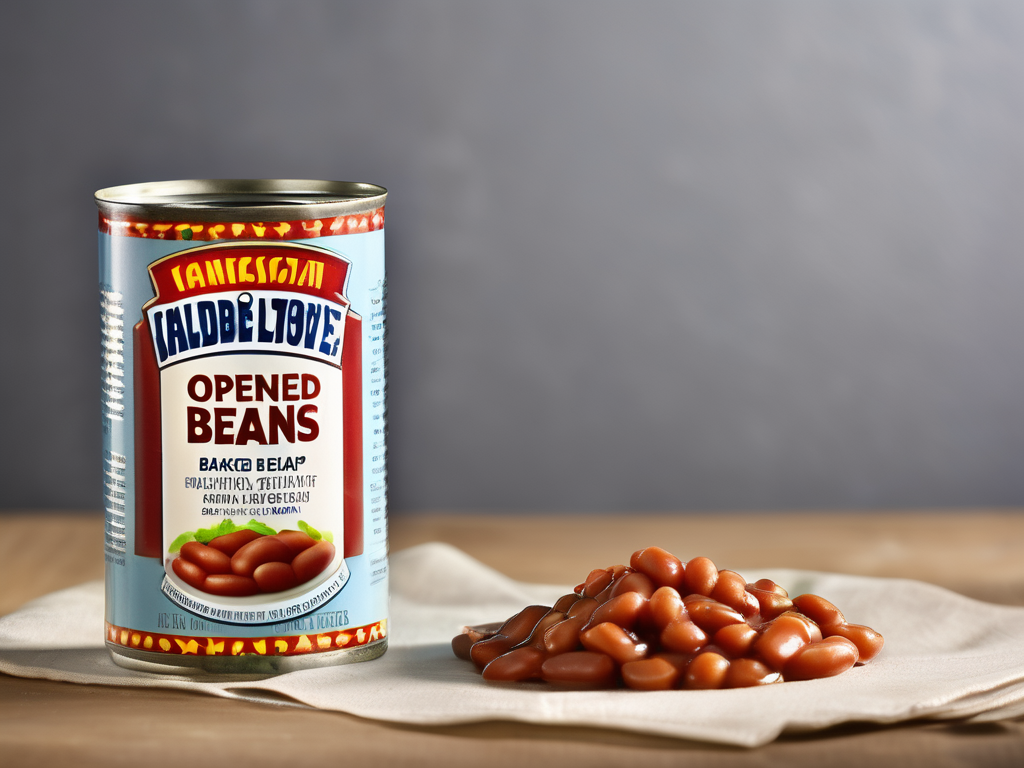
Signs That Opened Canned Baked Beans Have Gone Bad
Get Your Free Food Safety Cheat Sheet
30 most common foods with instant answers. Print it and stick it on your fridge—completely free!
Signs That Opened Canned Baked Beans Have Gone Bad
Canned baked beans are a convenient and tasty pantry staple that can be enjoyed on their own or as a side dish. However, like all canned foods, opened canned baked beans can go bad if not stored properly or if they have been exposed to certain conditions. In this blog post, we will discuss the signs that opened canned baked beans have gone bad and what you can do to ensure their safety and quality. (Opened canned baked beans)
Understanding the Shelf Life of Opened Canned Baked Beans
Before we delve into the signs of spoilage, it's essential to understand the typical shelf life of opened canned baked beans. Once a can of baked beans has been opened, it should be stored in the refrigerator and consumed within 3 to 4 days to ensure freshness and safety. Beyond this timeframe, the quality of the beans may deteriorate, and there is an increased risk of spoilage.
Signs of Spoilage in Opened Canned Baked Beans
Here are the key signs that indicate opened canned baked beans have gone bad:
-
Unpleasant Odor: One of the most noticeable signs of spoilage in baked beans is a foul or sour odor. If the beans emit a strong, off-putting smell that is different from their usual aroma, it is best to discard them.
-
Mold Growth: Inspect the surface of the baked beans for any signs of mold growth. Mold can appear as fuzzy green or white patches on the beans or around the rim of the can. Consuming moldy food can lead to food poisoning, so it's crucial to discard any cans showing mold.
-
Changes in Texture: Spoiled baked beans may have a slimy or mushy texture, indicating bacterial growth. If the beans feel unusually soft or slimy to the touch, it's a sign that they are no longer safe to eat.
-
Discoloration: Healthy baked beans should have a consistent color throughout. If you notice any unusual discoloration, such as dark spots or a change in color, it could be a sign of spoilage.
-
Bubbling or Fermentation: If you observe bubbles or signs of fermentation in the baked beans, it is a clear indication that harmful bacteria have started to multiply, leading to fermentation. In such cases, it is best to err on the side of caution and discard the beans.
Tips for Ensuring the Safety of Opened Canned Baked Beans
To prevent opened canned baked beans from going bad prematurely and to ensure their safety, consider the following tips:
-
Proper Storage: Store opened canned baked beans in an airtight container in the refrigerator to maintain their freshness and prevent contamination.
-
Labeling and Date: Label the container with the date the baked beans were opened to track their freshness. Remember to consume them within 3 to 4 days.
-
Avoid Cross-Contamination: When serving baked beans, use clean utensils to prevent cross-contamination. Do not leave opened cans out at room temperature for an extended period.
-
Reheating: When reheating leftover baked beans, ensure they are heated thoroughly to kill any potential bacteria. Heat them until they are steaming hot throughout.
-
Check for Recalls: Periodically check for any recalls or alerts related to the brand of canned baked beans you have purchased to stay informed about potential safety issues.
By following these guidelines, you can enjoy opened canned baked beans safely and minimize the risk of consuming spoiled or contaminated food.
Conclusion
In conclusion, it's essential to be vigilant when it comes to the safety of opened canned baked beans. By recognizing the signs of spoilage, practicing proper storage methods, and following food safety precautions, you can ensure that your baked beans remain safe for consumption. Remember, when in doubt, it's always best to discard any questionable food items to prioritize your health and well-being. Enjoy your baked beans responsibly and stay safe! (Opened canned baked beans)
Authoritative Food Safety References
These agencies and university labs inform every tip and health precaution we publish.
USDA FoodKeeper – Cold Storage Guidelines
Official refrigerator, freezer, and pantry timelines maintained by the U.S. Department of Agriculture.
Visit USDA FoodKeeperFDA Produce Safety Rule & Grower Guidance
Field-to-fridge handling practices that prevent contamination of fruits, vegetables, and leafy greens.
Visit FDA Produce SafetyCDC Foodborne Illness Prevention Hub
Surveillance-backed guidance on pathogens, symptoms, and steps to reduce foodborne illness risk.
Visit CDC Food SafetyUC Davis Postharvest Technology Center
University research detailing optimal storage atmospheres for produce after harvest.
Visit UC Davis PostharvestPenn State Extension – Home Food Preservation & Safety
Peer-reviewed extension bulletins on safe canning, chilling, and reheating practices.
Visit Penn State ExtensionGet Your Free Food Safety Cheat Sheet
30 most common foods with instant answers. Print it and stick it on your fridge—completely free! Want more? Upgrade to the complete guide with 70+ foods.
Scan your food directly and get instant safety info using our AI-powered camera feature.